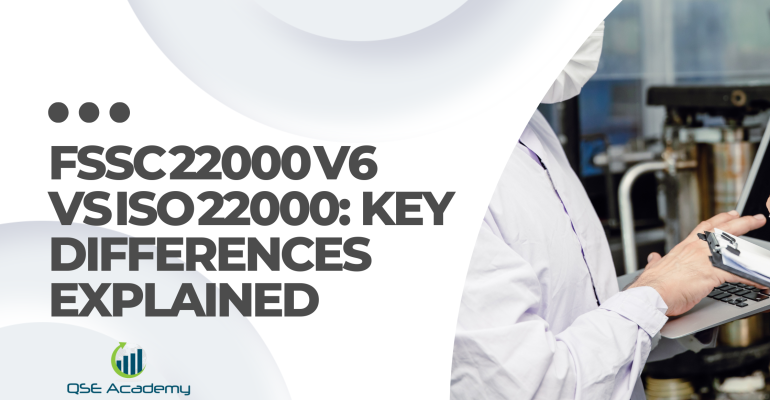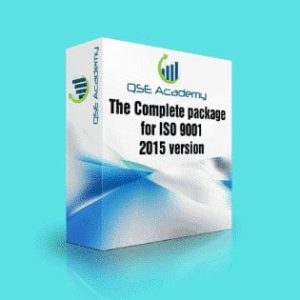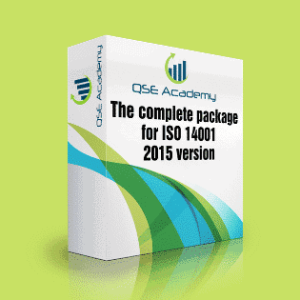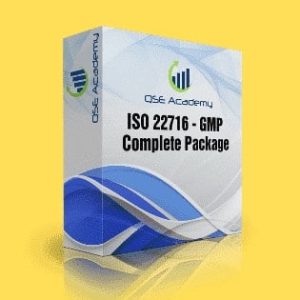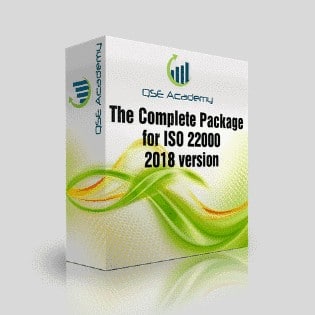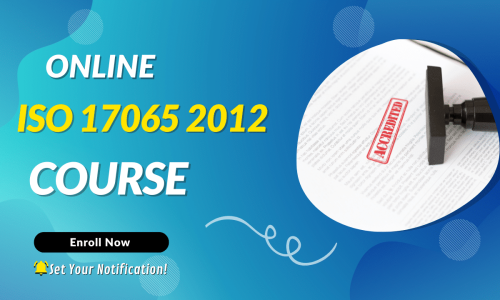FSSC 22000 V6 vs ISO 22000: Key Differences Explained
Why Understanding These Differences Matters
If you’re managing food safety systems, you’ve probably wondered: Should we stick with ISO 22000 or go for FSSC 22000 V6?
I’ve helped food manufacturers, packaging plants, and certification bodies work with both frameworks for years, and I can tell you—this question comes up all the time.
The truth is, the two standards share the same backbone, but their scope and recognition differ. Knowing those differences saves you money, simplifies your certification journey, and helps you meet retailer and export demands more confidently.
By the end of this guide, you’ll understand:
- What’s common and what’s new in Version 6.
- How documentation and audit requirements differ.
- Which standard suits your business best.
- And how to plan a smooth upgrade from ISO 22000 to FSSC 22000 V6.
ISO 22000: The Foundation of FSSC 22000 V6
Here’s something many people overlook—FSSC 22000 is built on ISO 22000. That means if you’re already certified to ISO 22000, you’re halfway there.
ISO 22000 gives you the structure: the Plan-Do-Check-Act (PDCA) cycle, risk-based thinking, and systemized food safety management. FSSC 22000 simply layers in additional requirements that make it GFSI-recognized, which is what major retailers and brands expect.
Pro Tip:
Don’t rebuild your system from scratch. Start with your ISO 22000 framework and map it to FSSC 22000 V6’s added clauses. You’ll cut your transition time in half.
Common Mistake:
Treating FSSC 22000 as a brand-new system. That usually creates unnecessary documents and confusion when auditors review overlapping procedures.
 What’s New in FSSC 22000 V6: Beyond ISO 22000
What’s New in FSSC 22000 V6: Beyond ISO 22000
Version 6 introduced some big updates that respond to industry trends and new GFSI benchmarking rules. These are the areas where most teams need to adjust:
- Food fraud and food defense: Now mandatory and auditable.
- Environmental monitoring: Especially for ready-to-eat food sectors.
- Food safety culture: You’ll need a plan to measure and improve it.
- Product labeling and allergen management: Tightened to prevent consumer risks.
- Scope expansion: Includes animal feed and pet food.
In one client project—a dairy manufacturer—we built their food defense plan around their existing HACCP analysis. Instead of adding a new system, we integrated risk points like ingredient authenticity and supplier verification. It met FSSC’s criteria without overcomplicating operations.
Pro Tip:
Start with a food fraud vulnerability assessment. It’s one of the simplest ways to show readiness for FSSC 22000 V6.
Documentation & Auditing: How FSSC 22000 V6 Differs from ISO 22000
If you’ve gone through ISO 22000 audits before, you’ll notice FSSC adds a few twists.
Documentation:
ISO 22000 focuses on system-level policies and records. FSSC 22000 adds scheme-specific documents—like management of services, product withdrawal procedures, and use of logos.
Auditing:
FSSC 22000 requires unannounced audits and stricter auditor competence verification. The audit cycle also involves data submission to the FSSC portal for transparency.
Pro Tip:
Maintain one integrated document control system for both standards. It helps during unannounced audits because everything is current and accessible.
Common Mistake:
Using the same checklist for ISO 22000 and FSSC 22000 audits. It’s an easy way to miss scheme-specific clauses like food defense or logo usage.
Certification & Accreditation: What Each Standard Demands
Both standards involve third-party audits, but there’s a key difference in oversight.
- ISO 22000 certification comes from accredited bodies working under ISO/IEC 17021-1.
- FSSC 22000 V6 certification can only come from Foundation-approved Certification Bodies, and audit data must be uploaded to the FSSC database.
That extra layer gives global recognition under GFSI (Global Food Safety Initiative)—a must-have if you supply major brands.
Pro Tip:
Before signing a contract, confirm your certification body is approved by FSSC for your food chain category. This prevents last-minute re-audits.
In one project, a beverage plant saved three months by selecting an FSSC-approved body early in the process instead of switching mid-audit.
Choosing Between FSSC 22000 V6 and ISO 22000
Here’s a quick way to decide which fits your organization:
| Criteria | ISO 22000 | FSSC 22000 V6 |
|---|---|---|
| GFSI Recognition | ❌ | ✅ |
| Sector Coverage | Broad | Detailed by category |
| Market Demand | Moderate | High (retailers & exports) |
| Complexity | Lower | Higher (added requirements) |
| Cost | Lower | Slightly higher |
If you mainly serve local markets or small-scale operations, ISO 22000 is often sufficient. But if your clients are asking for GFSI-recognized certification, or you’re exporting, FSSC 22000 V6 is your ticket.
Pro Tip:
Don’t upgrade just for the label—do it because your market needs it.
How to Transition from ISO 22000 to FSSC 22000 V6
Upgrading doesn’t have to be painful. Here’s a structured way to do it:
- Run a gap analysis comparing your ISO 22000 system with FSSC V6 add-ons.
- Update your PRPs (Prerequisite Programs) and food defense plans.
- Train your team on new scheme-specific clauses.
- Engage your certification body early for guidance.
- Conduct an internal audit before the official one.
One frozen-food exporter I worked with completed their transition in just 90 days by following this roadmap. The secret? Clear milestones and a proactive audit plan.
Pro Tip:
Use a transition checklist or software to monitor progress—it keeps you from missing small but critical requirements like logo control.
FAQs — FSSC 22000 V6 vs ISO 22000
Q1: Is FSSC 22000 harder to achieve than ISO 22000?
Not necessarily. It’s more detailed, but if you already meet ISO 22000 requirements, you’re 80% ready for FSSC 22000 V6.
Q2: Can a company hold both certifications?
Technically yes, but it’s redundant. FSSC 22000 includes ISO 22000, so most organizations just upgrade.
Q3: How often are audits done under FSSC 22000?
Annually, with at least one unannounced audit every three years to maintain certification.
Conclusion — The Smarter Way to Move Forward
Both ISO 22000 and FSSC 22000 V6 build strong food safety systems. The difference is recognition and rigor.
If your goal is to meet global brand or export expectations, FSSC 22000 V6 is worth the extra effort. If you’re focusing on internal control and continual improvement, ISO 22000 remains a solid foundation.
I’ve guided dozens of businesses through both paths, and the most successful ones always start with a clear plan—not panic before an audit.
Next step:
Download our FSSC 22000 V6 Gap-Analysis Template or book a quick consultation with QSE Academy to find the most cost-efficient path for your certification.
Melissa Lavaro is a seasoned ISO consultant and an enthusiastic advocate for quality management standards. With a rich experience in conducting audits and providing consultancy services, Melissa specializes in helping organizations implement and adapt to ISO standards. Her passion for quality management is evident in her hands-on approach and deep understanding of the regulatory frameworks. Melissa’s expertise and energetic commitment make her a sought-after consultant, dedicated to elevating organizational compliance and performance through practical, insightful guidance.

